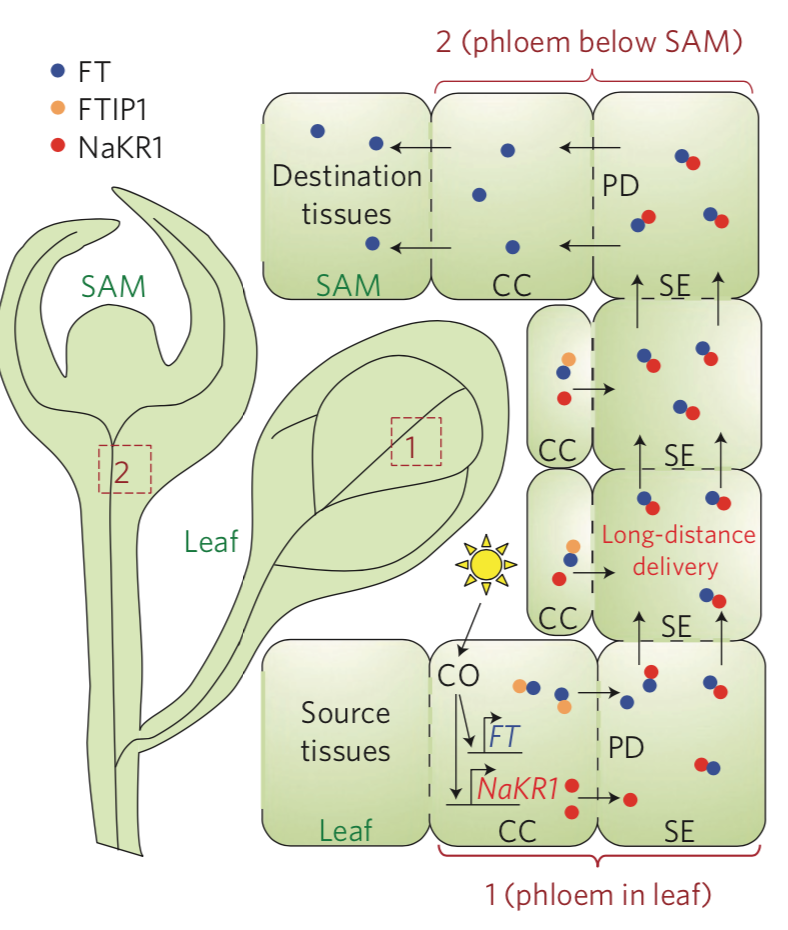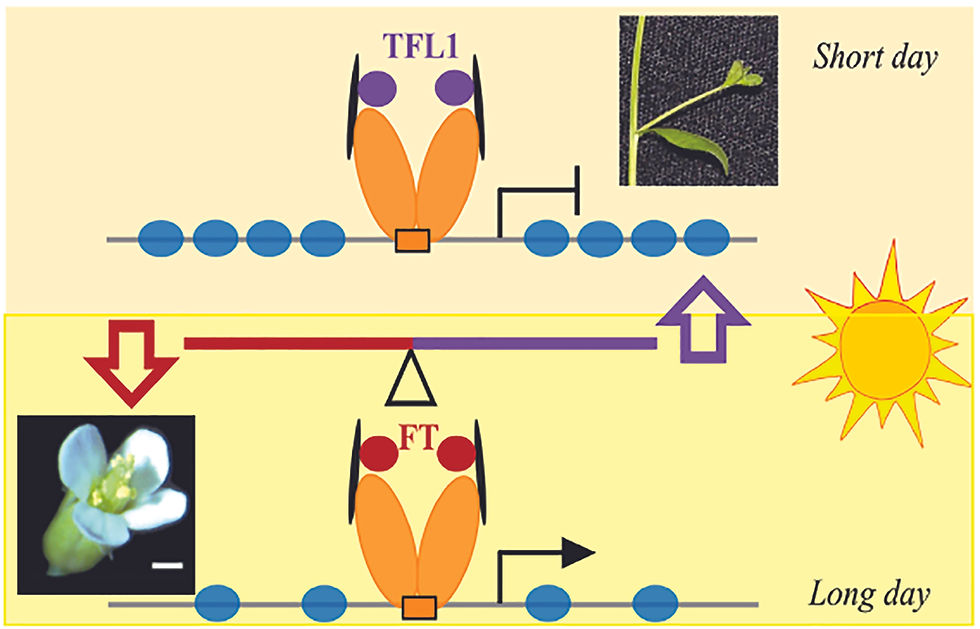NaKR1 regulates long-distance movement of FLOWERING LOCUS T in Arabidopsis
- Yang Zhu

- Dec 26, 2020
- 1 min read
Zhu Y, Liu L, Shen L, Yu H*.
2016 Nature Plants
Flowering plants perceive photoperiodic signals in leaves to generate mobile stimuli required for the induction of flower formation at shoot apices. Although FLOWERING LOCUS T (FT) has been identified as part of the mobile floral stimuli in Arabidopsis thaliana, the mechanisms underlying long-distance movement of FT from leaves to shoot apices remain largely unclear. Here we show that a heavy-metal-associated (HMA) domain-containing protein, SODIUM POTASSIUM ROOT DEFECTIVE 1 (NaKR1), is activated by CONSTANS (CO) under long-day conditions and regulates long-distance movement of FT in Arabidopsis. Loss of function of NaKR1 compromises FT transport to shoot apices through sieve elements, causing late flowering under long-day conditions. NaKR1 and FT share similar expression patterns and subcellular localization, and interact with each other in vivo. Grafting experiments demonstrate that NaKR1 promotes flowering through mediating FT translocation from leaves to shoot apices. Thus, photoperiodic control of floral induction requires NaKR1-mediated long-distance delivery of florigenic signals.





Comments